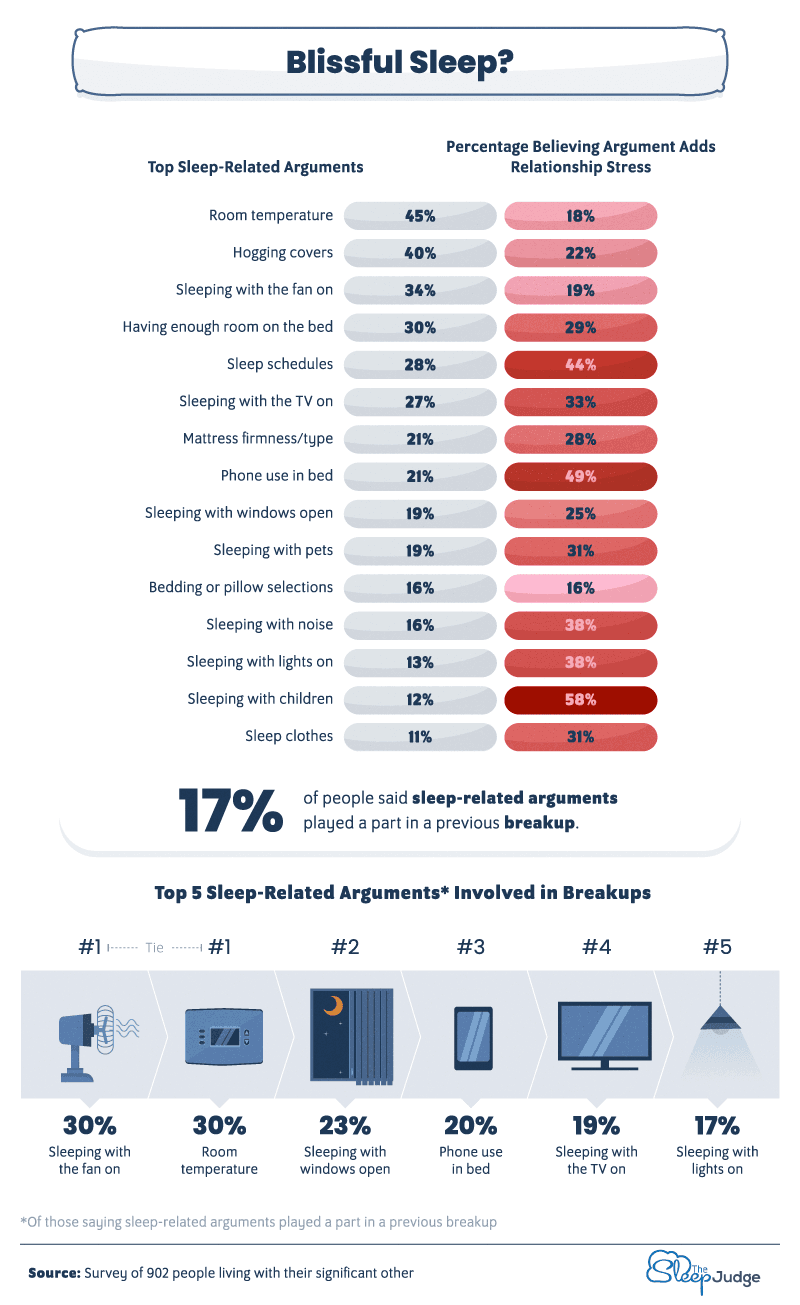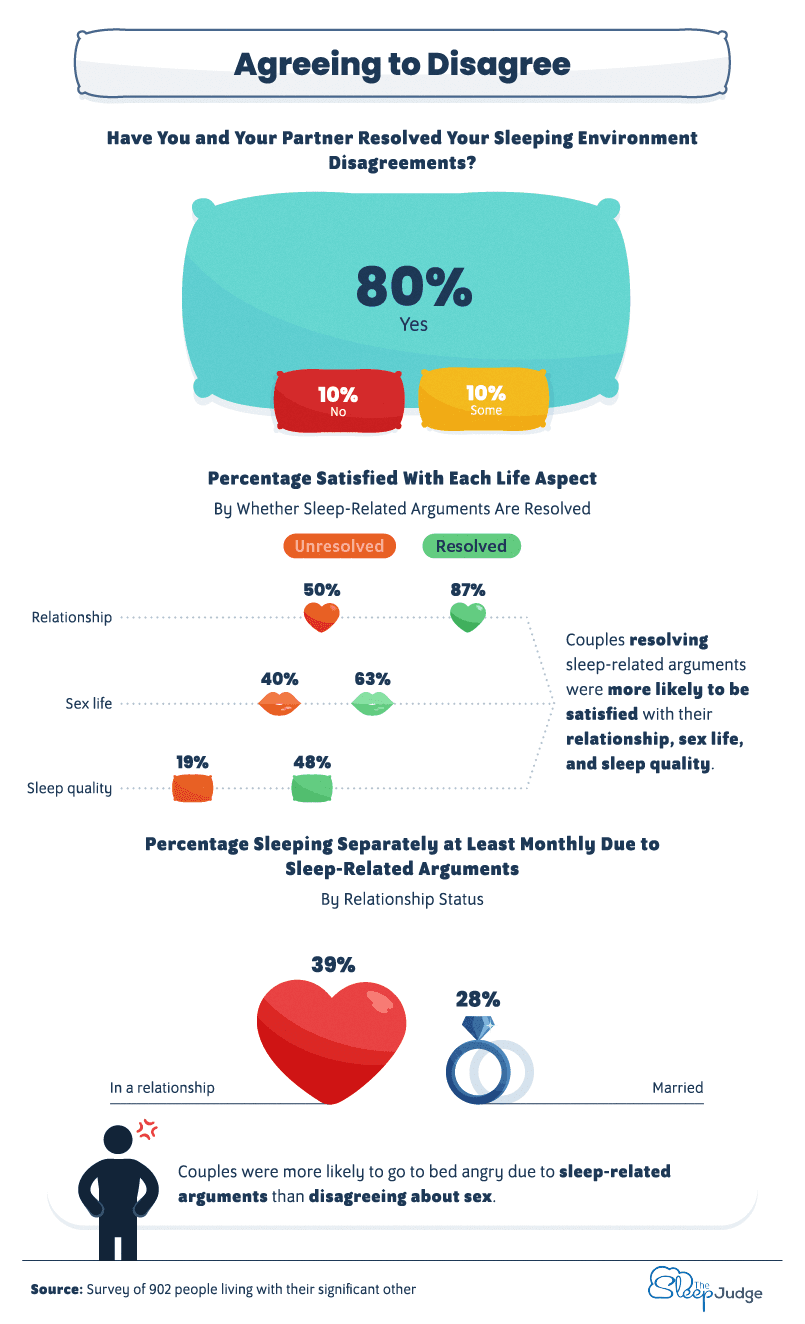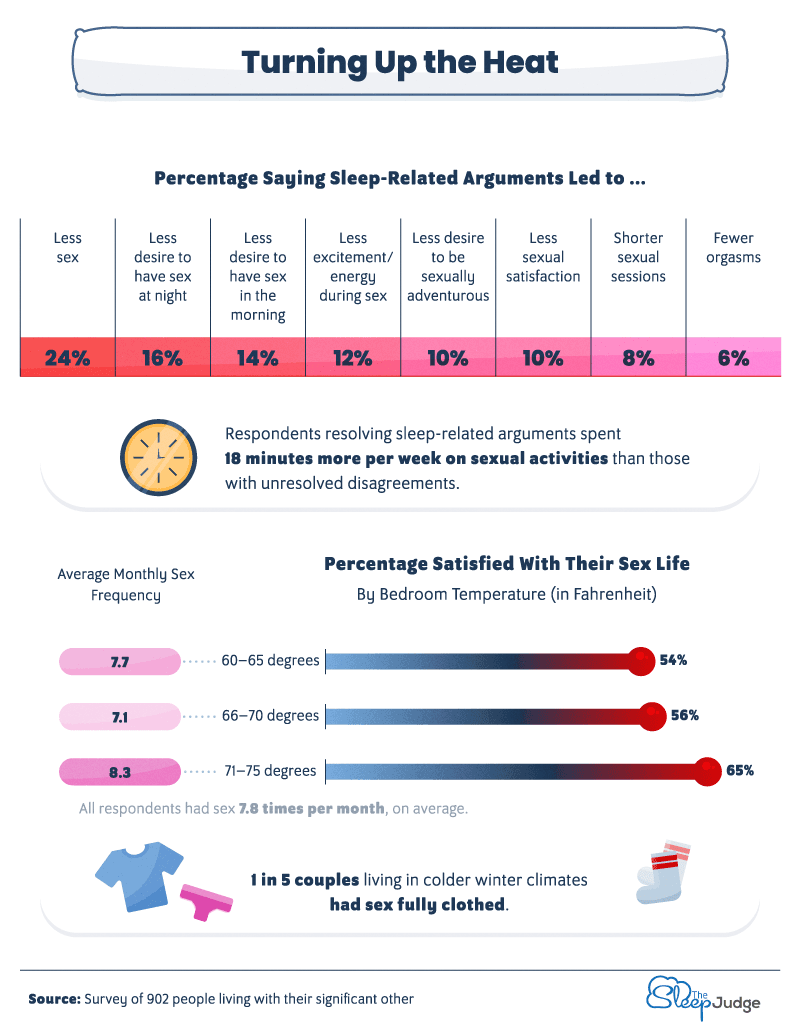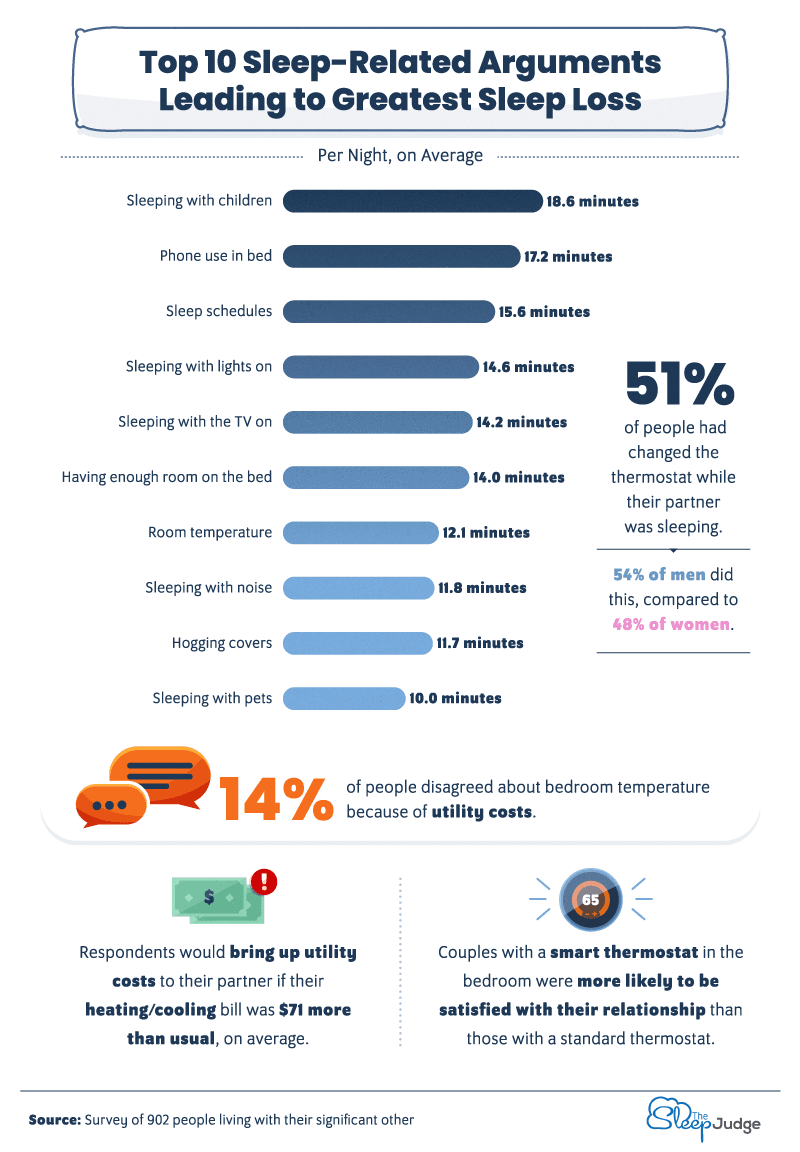
Different environmental preferences in the bedroom, as many Americans will tell you, can lead to poor rest and even poorer relationships. We would know – we asked 902 of them, all of who lived with their significant other. As the sleep experts, we wanted to know exactly how bedroom preferences impact not only rest but also the health and happiness of the couples themselves. Continue reading to see what respondents had to say.
You may want to read: Best Mattress for Couples
Contrasting Bedroom Behavior

But there’s another way to look at these problems, which is through the lens of the stress they induce. Sure, one argument might be more common, but is another more problematic? The short answer is yes. Although only 12% of people disagreed on whether to let their child into the bed, this was the most impactful on relationship stress. Phone use in bed was almost as detrimental, yet more common: 21% of couples argued about this, and 49% of those same couples said it added relationship stress.
If the stress gets bad enough, it could easily end in a breakup … and it often did. Speaking only to those who did break up due in part to sleep-related disagreements, we found that one person wanting the fan on played a role 30% of the time. Another 30% also cited room temperature as a breakup catalyst. Sleeping with the window open was also a common relationship buster. But things aren’t always so grim. Continue reading to see how couples managed to resolve some of these differences.
Resolving Disagreements

That said, going to sleep angry frequently occurred for couples unable to resolve their sleep differences. Our study revealed that couples were more likely to fall asleep angry due to disagreements about sleep environment than they were to fall asleep angry over disagreements about sex before bed. What’s more is that nearly 40% of relationships and 28% of married couples slept in separate bedrooms at least once per month when their sleep habits diverged without resolution.
Bedroom Conditions for Love

Those who did resolve their sleep disagreements, however, spent an average of 18 more minutes per week on sexual activities than those who remained in conflict. One conflict in particular – bedroom temperature – led to an exceptionally satisfying sex life when set at a specific temperature range. Sixty-five percent of partners who set their bedroom temperature between 71 and 75 degrees reported sexual satisfaction and had sex an average of 8.3 times each month.
Losing Arguments and Sleep

Sharing your bed with a child in addition to a partner is a controversial issue, and many respondents experienced a pertinent downside: an average of 18.6 minutes of sleep lost each night. Children make sleep difficult to come by, so an additional loss of slumber can be detrimental to a parent’s well-being. Consider making every effort with your partner to solve this difference.
Changes in room temperature, which was revealed to be the most common disagreement, correlated with an average of 12.1 minutes of lost sleep throughout the week. Unfortunately, many couples chose a loophole as opposed to direct conflict resolution: 51% changed the thermostat to their own preference after their partner fell asleep. In 14% of instances, disagreement arose because of utility costs, where an average of $71 in increased expenditure would result in a serious conversation with their partner about finances. Tech might be to the rescue here, as couples with smart thermostats in their bedroom were more likely to be satisfied with their relationship than those with a standard thermostat.
Sleeping for Satisfaction

Sharing, Caring, and Sleeping
American respondents ultimately backed science: Poor sleep and poor mood are closely related, and differences in how to get sleep can result in ever poorer sleep, poorer mood, and worsening relationships. Conflict resolution over bedroom preferences is imperative for both the health of the relationship and our physical bodies.
If you find yourself in the middle of a sleep conundrum or even with some room for improvement, turn to The Sleep Judge. With honest and poignant reviews on everything from sleep devices to pillows and mattresses, we have the information to help you and your current or future partner fall into the blissful slumber your relationship deserves.
Methodology and Limitations
We used Amazon’s Mechanical Turk to survey 902 people living with their significant other. For respondents to be included in our data, they were required to complete the entire survey and pass an attention-check question in the middle of each survey. Participants who failed to do either of these were excluded from the study.
Of all respondents, 53% were women, and 47% were men. 44% of respondents were millennials (born 1981 to 1997); 37% were from Generation X (born 1965 to 1980); and 18% were baby boomers (born 1946 to 1964). Generation Z (born 1998 to 2017), the silent generation (born 1928 to 1945), and the greatest generation (born 1927 or earlier) were excluded from the study. The average age of respondents was 41 with a standard deviation of 11 years. The data had a 5% margin of error for millennials and Generation X and an 8% margin of error for baby boomers.
We considered the term “sleep-related arguments” to include disagreements over items shown in the first visualization (e.g., room temperature, hogging covers, sleeping with the fan on).
In finding averages of quantitative values, we removed outliers so that data were not exaggerated.
Fair Use Statement
Sharing this data just might save a friend’s or your next relationship, especially if you know someone who already has a hard time sleeping! If you do share this information, please make sure it’s for noncommercial purposes and that you link back to this page.